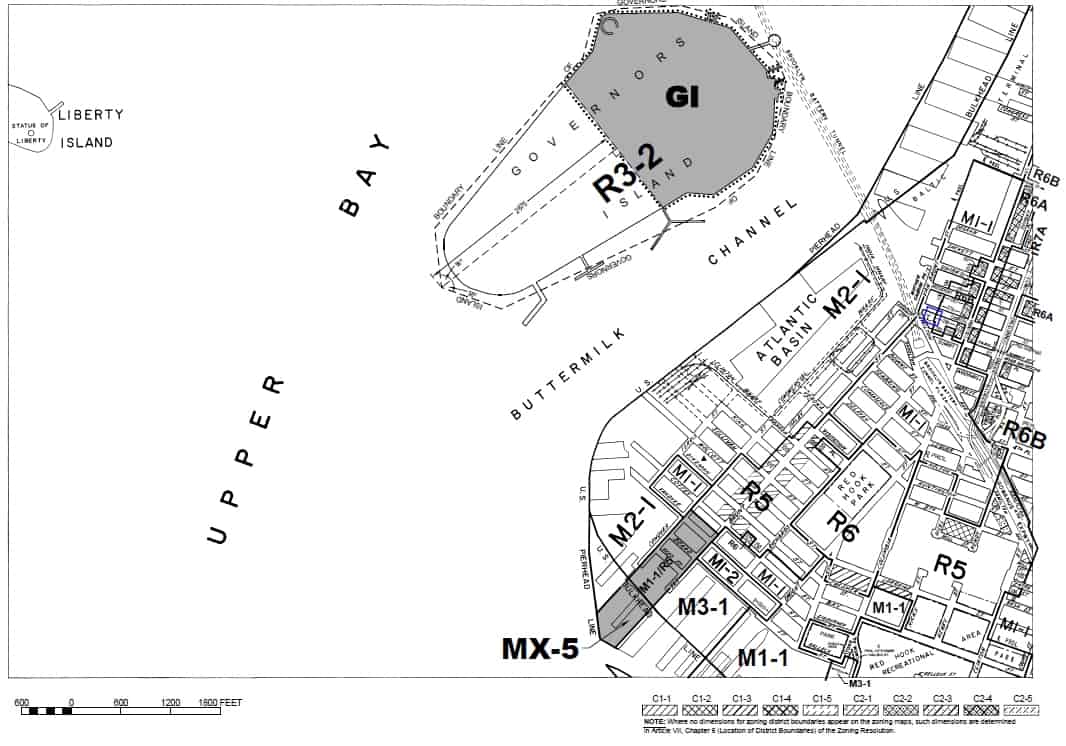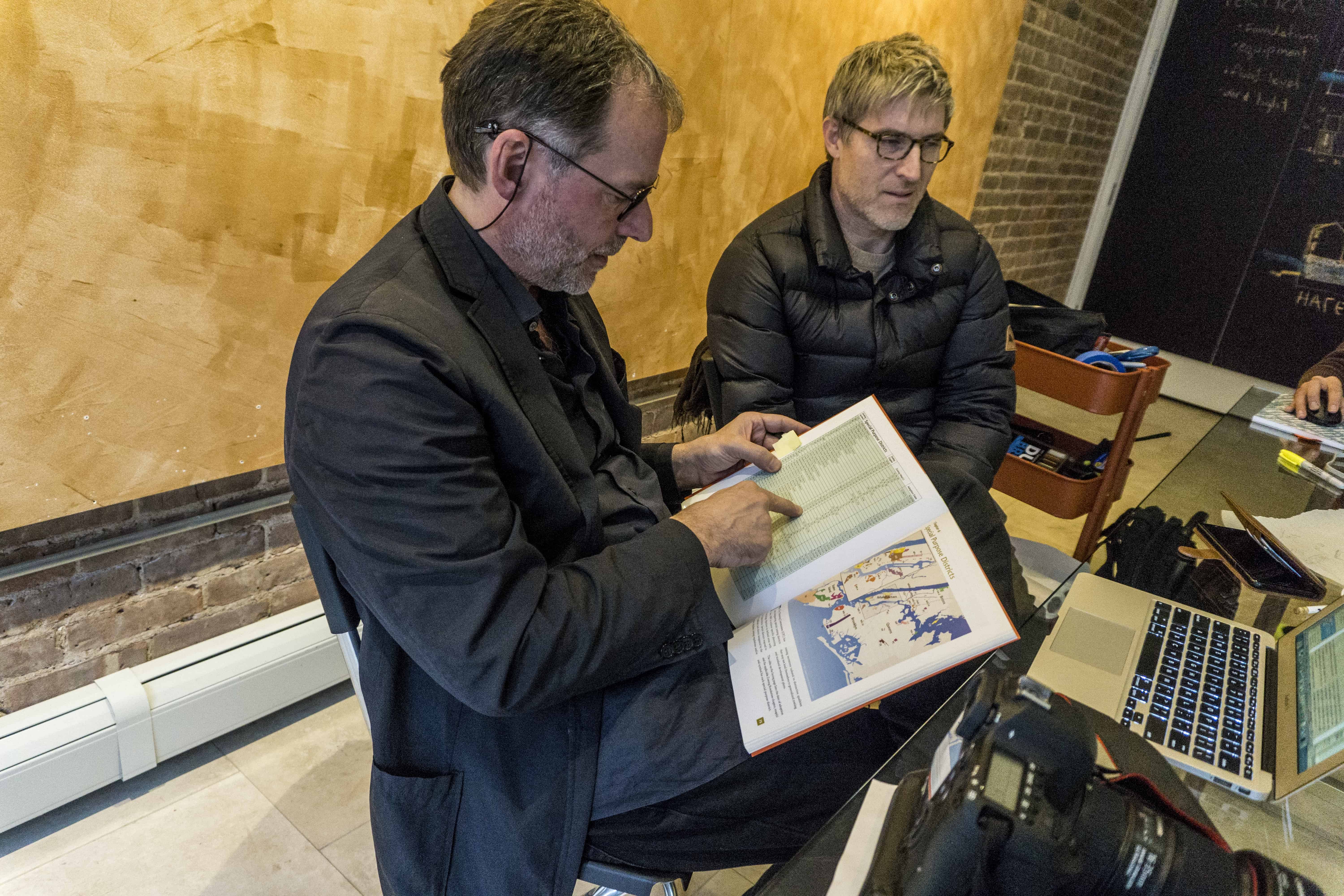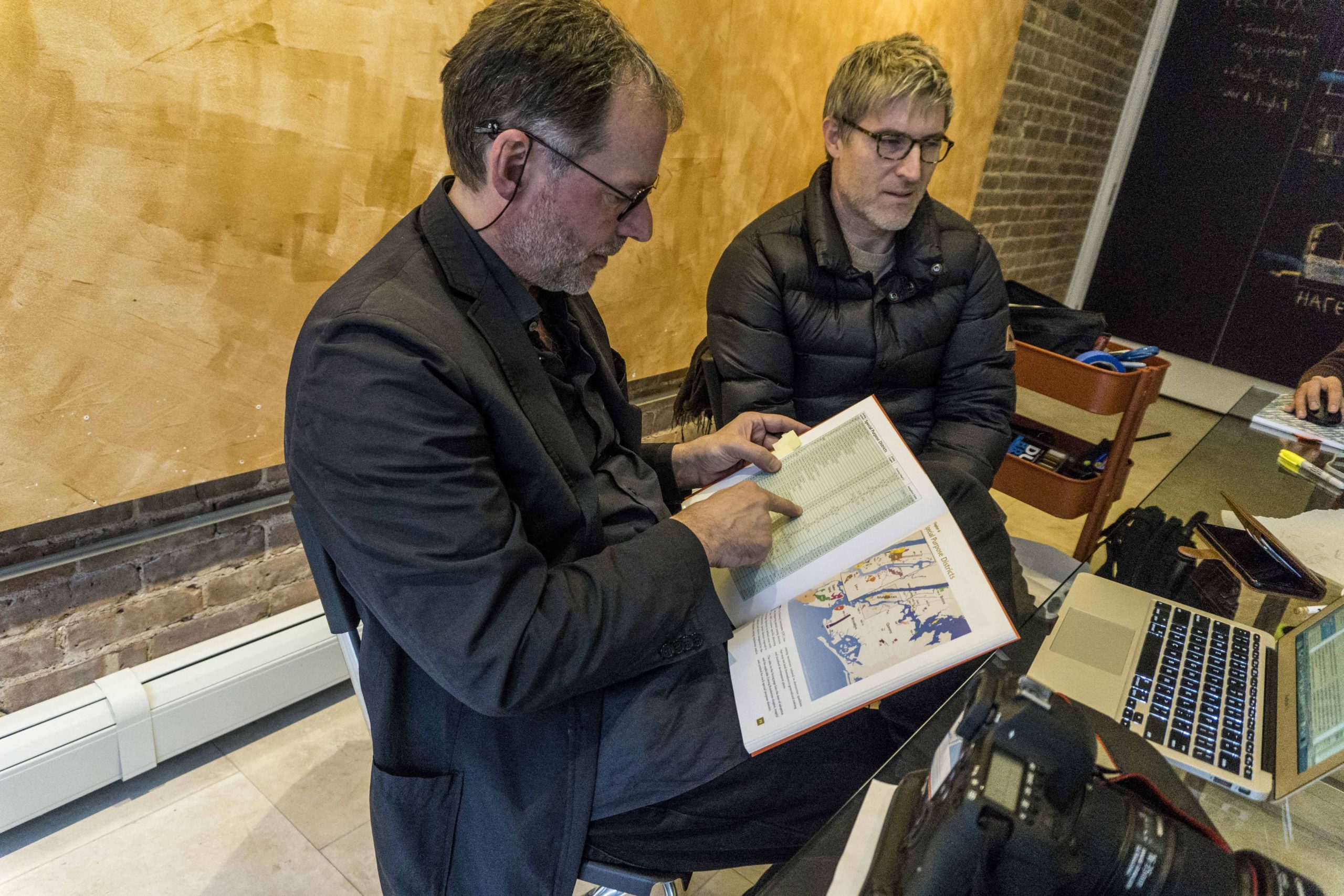
If you walk south from Hamilton Avenue on Van Brunt Street, you’ll start off in either M1-1 (on the left) or M2-1 (on the right). Before you get to the MX-5 by Dry Dock and Fairway, you’ll pass through a section of R5. That’s where you’ll find land-use expert Alexandros Washburn, who has set up open office hours in his home to explain what the heck all these classifications mean.
“The point of these open hours is to have a way for people from the community to walk in and put their ideas, thoughts, hopes into the language of zoning,” says Washburn. “This is just a way for people to come in that’s informal, that’s not in the format of an official meeting.”
Zoning regulations, though often invisible to New Yorkers, affect us at every scale. They determine not only the size and shape of our buildings and neighborhoods, but the activities permitted within them. Yet understanding the esoteric and jargon-rich realm of land use regulations can be a huge challenge for everyday New Yorkers.

“If you have a thought, we can draw it and express it and quantify it, and turn it 3D,” says Washburn, a veteran city planner, industry professor at Stephens Institute of Technology, and founding director of the Center for Coastal Resilience and Urban Xcellence. “We can start seeing how it would fit into the bigger mix of Red Hook.”
The open hours are currently set for Wednesdays from 2-4 pm on the ground floor of Washburn’s house at 373 Van Brunt Street. Visitors will have access not only to the expertise of Washburn and his research assistant, Jason Beury, but to all the tools of their trade – including specialized software, handbooks, and large blackboards.
“Now we’ve got this incredible ability with computer modeling, and visualization, and dynamic models,” says Washburn, who has spoken to the Star-Revue before on this subject. “We have so much greater an ability to figure out how things could be if you put in this rule or that rule. It’s really not that hard to test out outcomes.”

Washburn is quite willing to dive into specific details. One guest walked in to learn more about permitted uses for his Van Brunt Street building, which houses a business on the ground floor and apartments above. He learned that he could convert the ground floor to residential as-of-right, but that he could not convert the commercial space to either an animal pound or a crematorium.
“MX sounds very appealing as an approach because it allows mixed uses,” explains Washburn. “But it hasn’t done the mixing it was supposed to do. Typically, all of the zoning gets sucked up into residential.”
Washburn is also interested in the broader picture. He believes that change is inevitable in Red Hook, and hopes that these open hours could provide a forum for the community to be proactive about shaping that change.
“The watchword of zoning is to prevent the worst, permit the best, which is actually a hard thing to do,” says Washburn. “We’re trying to do some community planning on what Red Hook is going to be like.”









